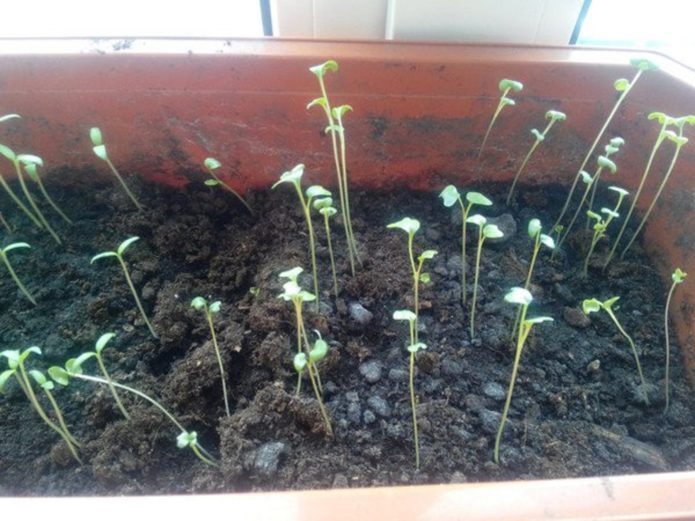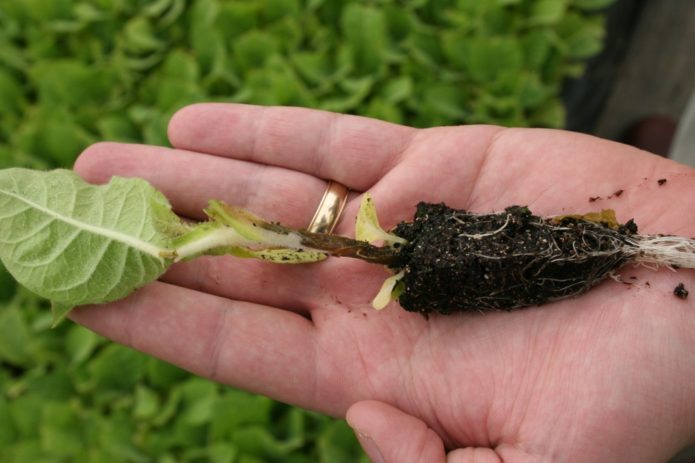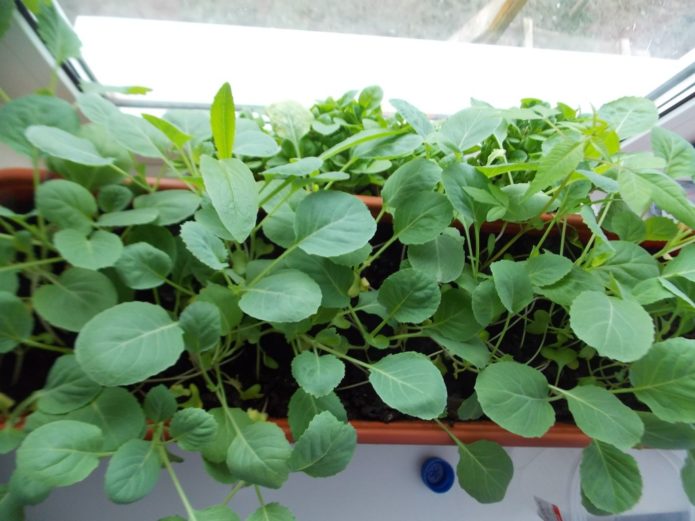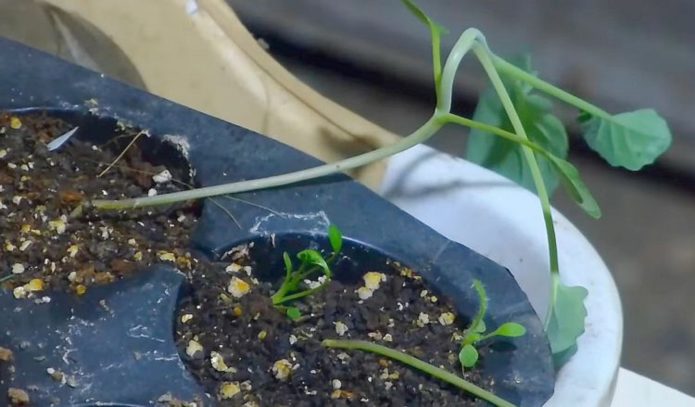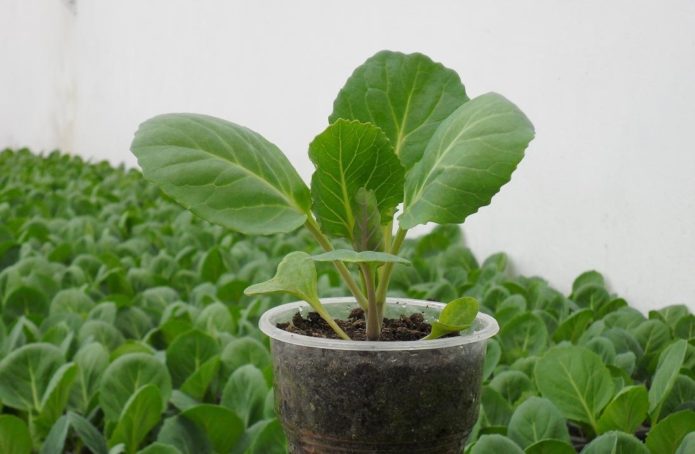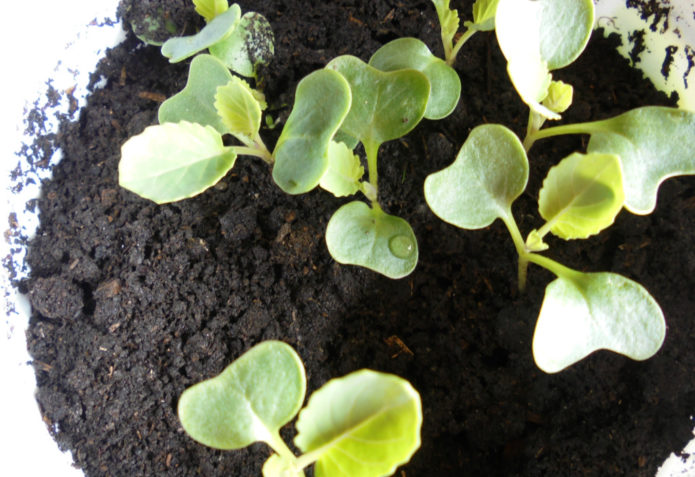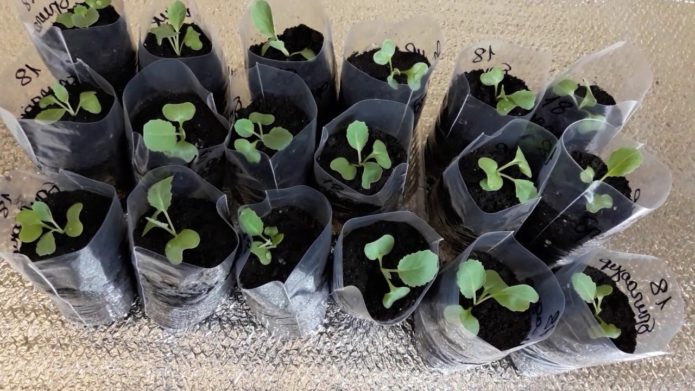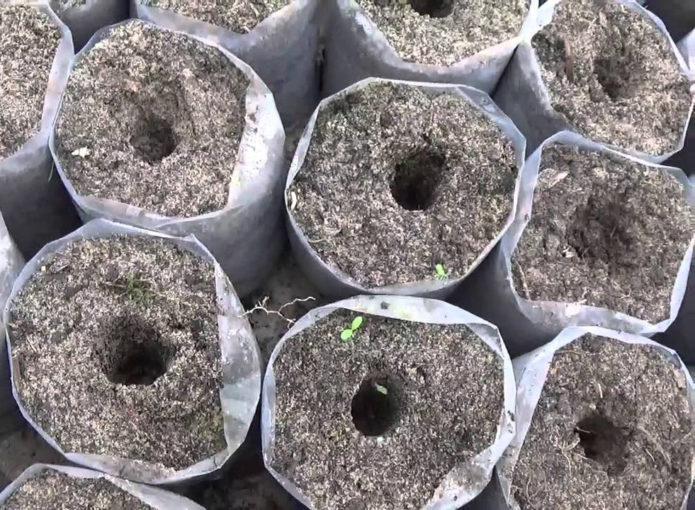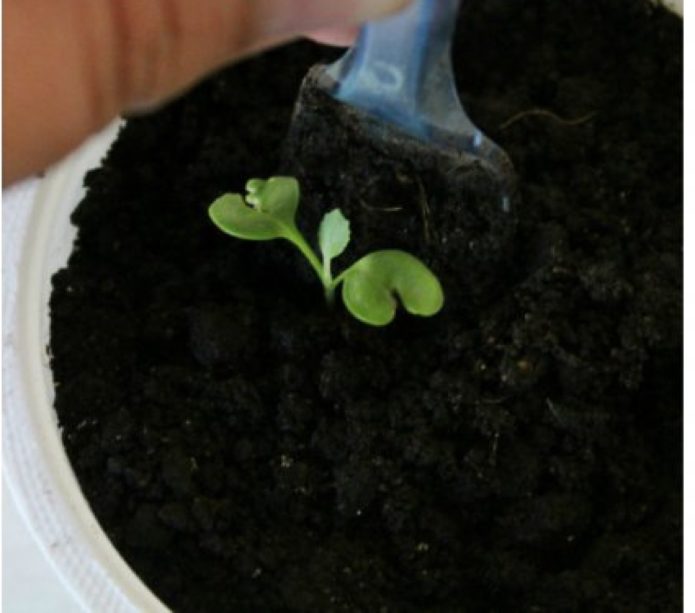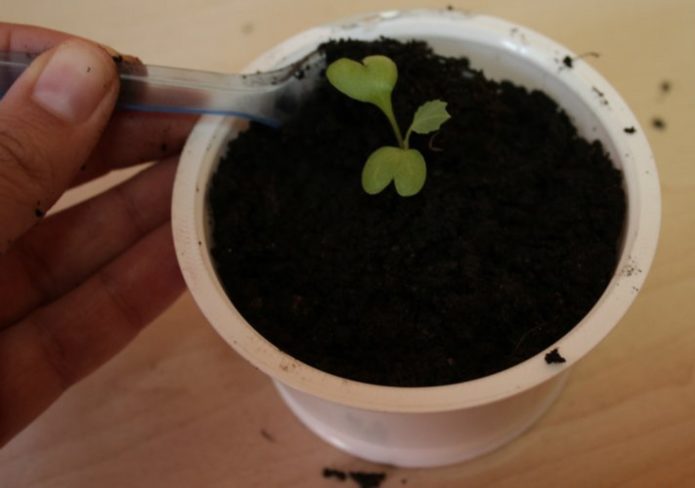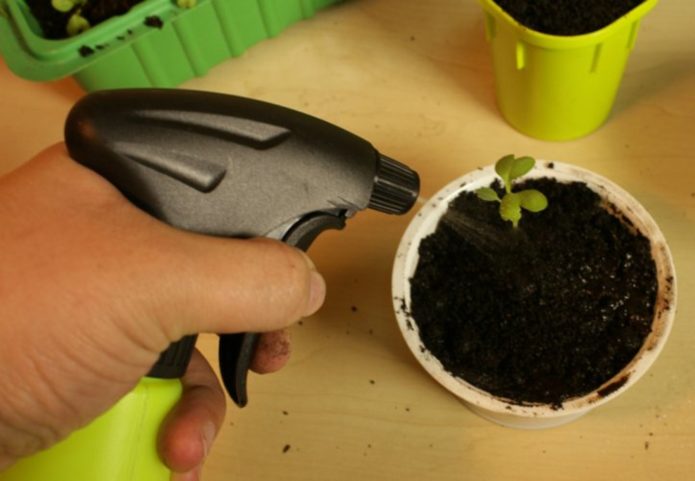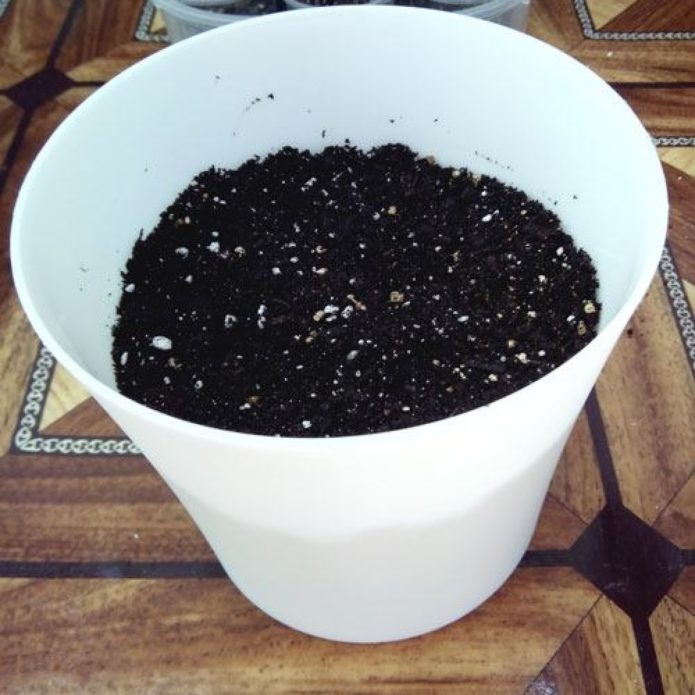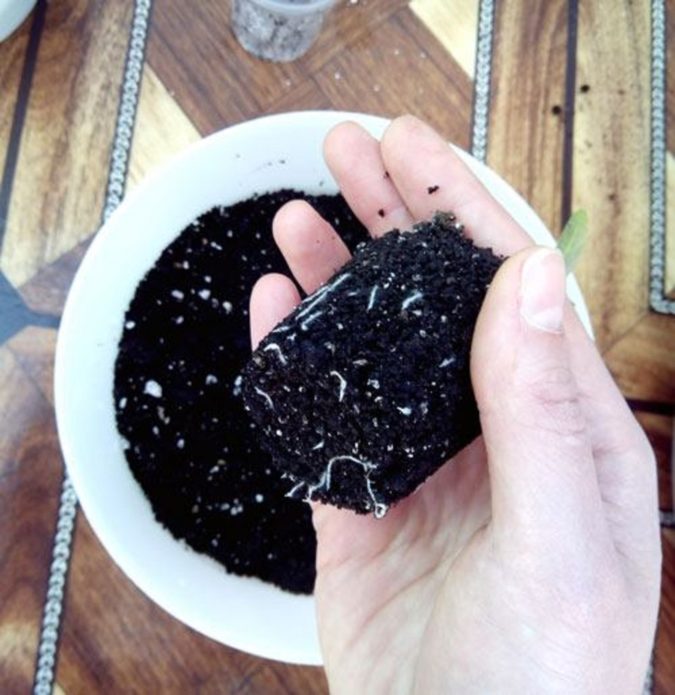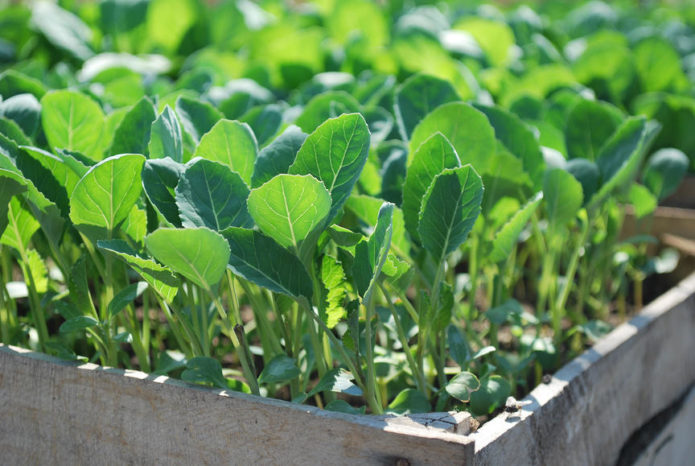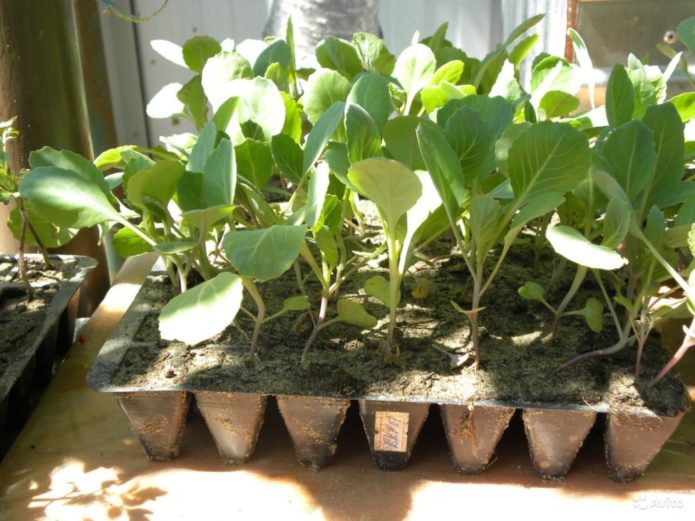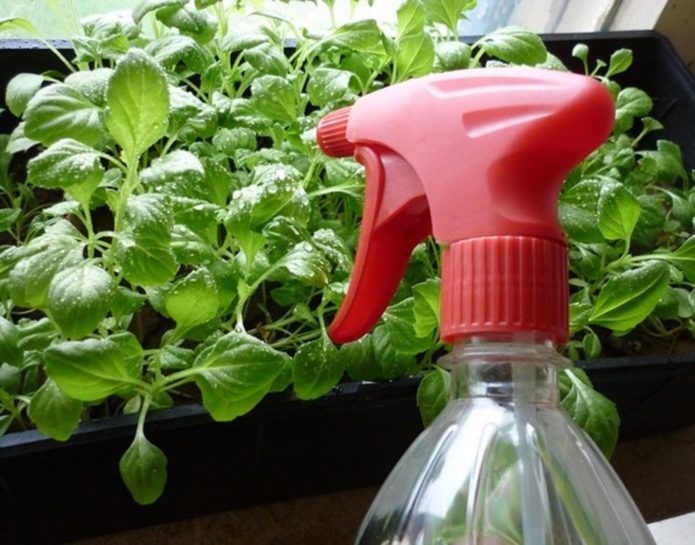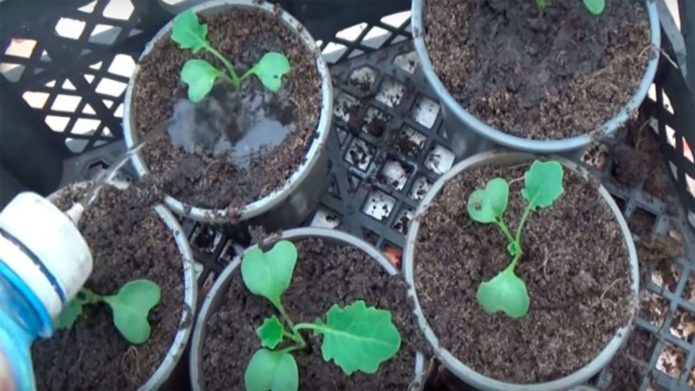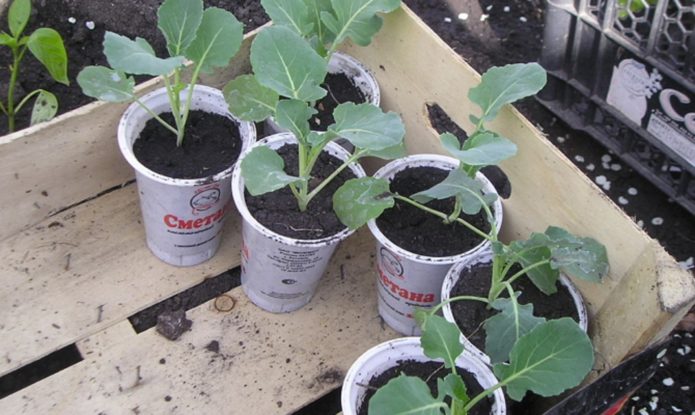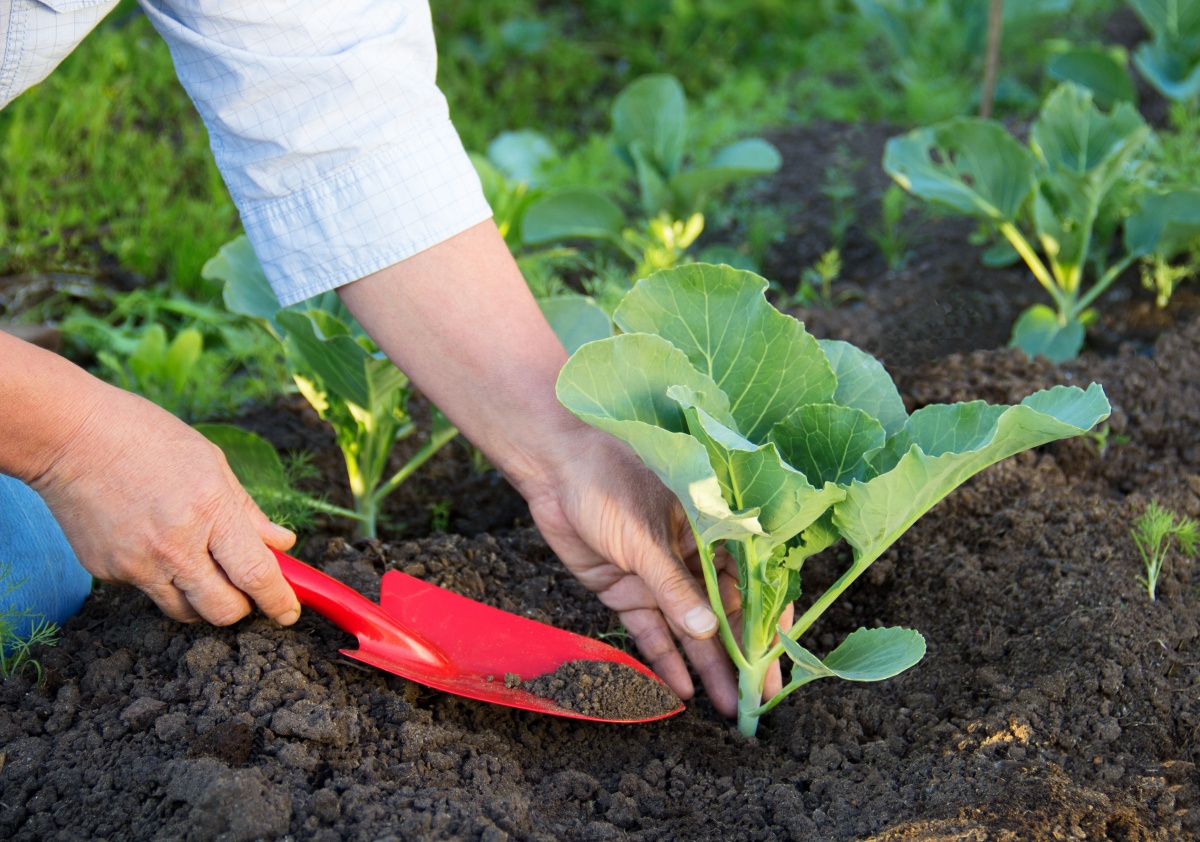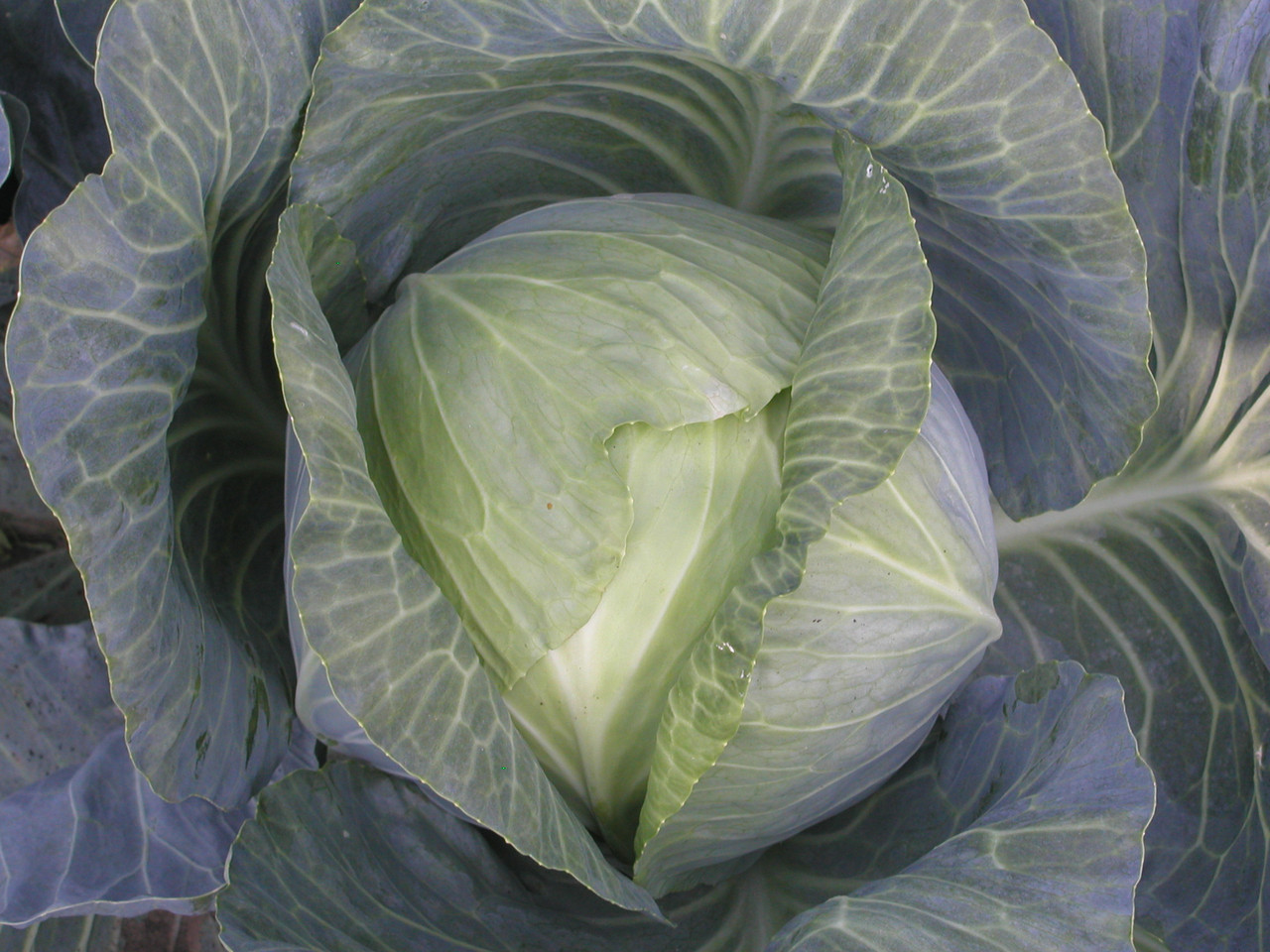Many gardeners grow cabbage in seedlings, which allows them to get the vegetable at an earlier date. The seedling period is very important for the formation of the future harvest. To keep the seedlings strong and healthy, they are transplanted from a nursery or small cells in a container of a larger volume. However, it is necessary to dive the seedlings, taking into account the age of the seedlings and observing the rules of agricultural technology.
Content
What is a pick and is it always necessary to do it
Picking is the planting of seedlings in individual large-volume containers. In the south of the country, where it is already warm in early spring, cabbage is grown in a seedless way, immediately sowing in the garden. In this case, a transplant is not required.
When a pick is required:
- When sowing in a common dish or small pots (100 ml), to avoid intertwining the roots of neighboring plants and injuring them when planting in a greenhouse or vegetable garden.
- When crops are too thickened to select the strongest shoots that can yield a harvest in the future.
- With strongly elongated seedlings, to slow down their growth.
- In case of signs of disease on plants, in order to save uninfected seedlings and renew the soil in which pathogenic microorganisms can survive.
The attitude to this procedure among gardeners is ambiguous. Someone believes that it is impossible to get strong viable seedlings without a pick. Seating in larger containers stimulates the growth of the root system and active growth of the aerial part. In the initial phase of development, for the rapid germination of the seed and the opening of the first leaves, many nutrients are not required, but oxygen is needed.
In small containers with holes, the water after irrigation does not have time to stagnate, providing the seedlings with air exchange. Gradually building up the root system and leaves, the plants begin to press against each other, their need for nutrition increases. There is a need to plant them in a large container.
Positive aspects of picking:
- The grown seedlings are provided with a larger area, the illumination and air exchange are improved.
- The depleted soil is replaced with a more nutritious one.
- Thin and damaged shoots are discarded.
- A strong root system is formed, the vitality of plants increases.
Another part believes that during transplantation, delicate shoots are exposed to severe stress, and prefer to do without it, immediately sowing in a large container. But in such conditions, the growth processes are rather slow, since moisture, lingering in the soil, hinders the oxygen exchange of small seedlings.
Opponents of the dive point out its shortcomings:
- When planting, the roots often break, and the sprouts may not take root.
- As a result of damage to the root system, the growing season increases.
- The injured root begins to grow to the sides, occupying a large area and taking nutrients from neighboring plants.
However, practice shows that it is precisely as a result of picking that a powerful root system is formed in the seedlings, which is the key to strong and healthy plants.
Video: pickled cabbage seedlings
When is it better to pick cabbage
Seedlings usually dive when 1–2 true leaves are formed - at this stage, it quickly adapts to a new place and begins to grow intensively. However, an earlier transplant is also possible when the cotyledons are opened, if the shoots are strong. Therefore, farmers recommend focusing on the appearance of plants: after all, weak shoots are easily injured and are unlikely to take root. It is undesirable to carry out a pick at a later date, since overgrown seedlings are more difficult to tolerate a transplant and develop more slowly.
Table: optimal timing for planting seedlings
| Cabbage variety | The best time for picking seedlings (number of days after germination) | Time limit when the transplant is ineffective (days) |
| Early and medium white cabbage, savoy | 7–8 | 14–16 |
| Cauliflower, kohlrabi, broccoli | 9–10 | 17–19 |
The best time for picking seedlings according to the lunar calendar
When planning a picking of seedlings, experienced gardeners always check with the Lunar calendar. It has long been noticed that the satellite of the Earth has a strong effect on plants, and differently in different phases. It is better to plan the transplanting of seedlings into new soil for the growing moon, when all the energy is accumulated in the aboveground part of the plants, giving impetus for their rapid growth. Seedlings are not so vulnerable and recover quickly even with minor root damage.
But it is better not to make a pick on the waning moon - during this period, the inflow of juices to the root system increases, and the slightest violation of its integrity can slow down the development of sprouts, greatly weaken them. You should not transplant also in the new moon phase and with a full moon, when the growth of seedlings stops, their life potential decreases. An incorrectly chosen day for planting can lead to the fact that the plants will not take root well and may even die.
Video: when to start picking cabbage
Carrying out a pick of cabbage
Having decided on the timing of the transplant, it is necessary to prepare the soil, tools and new containers. The nutrient substrate can be purchased at the store or prepared by yourself from equal parts of fertile soil, peat and sand with the addition of ash (200 g / 5 l).
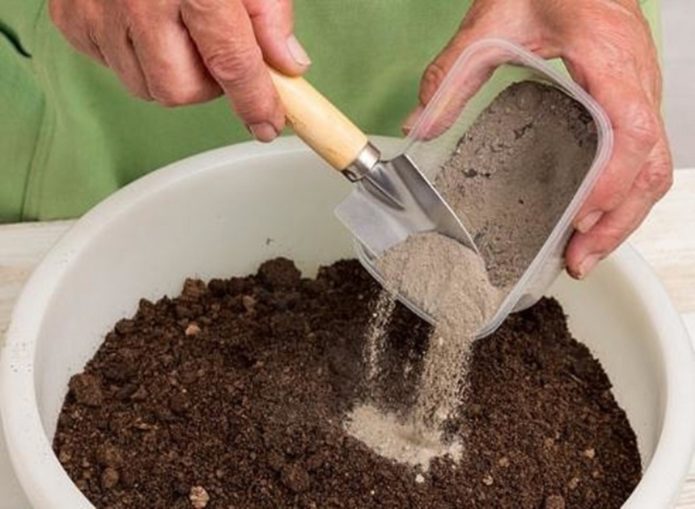
It is easy to prepare nutrient soil from equal parts of peat, sand and earth, be sure to add a little ash
A teaspoon or small spatula is usually used to extract seedlings from the soil. You can dive seedlings in various containers: plastic cups with a volume of 180-200 ml, peat pots, film diapers.
Seedlings dive in two ways: transplant and transshipment.
Transplanting seedlings
A few hours before planting, the plants are watered with warm water so that they can easily be separated from the soil.
Step-by-step instruction
- Containers with large cells or pots are filled 3/4 with nutrient mixture.
- Having slightly compacted the soil, one recess is made in each container.
- Pry the sprout with a spatula and carefully remove it together with an earthen lump on the roots.
- The plant must be held by the cotyledons, not by the stem.
- The longest root is pinched, which contributes to the formation of a branched root system.
- Lower the seedling into the hole.
- Sprinkle with earth until the cotyledonous leaves and tamp lightly so that it adheres well to the roots.
- The transplanted seedlings are watered.
Transshipment
The advantage of this method is that the seedlings are transferred into a new container with an earthen lump, while the roots remain intact, the plants do not need a recovery period, and there is no slowdown in development.
Step-by-step instruction
- Watering the cabbage is stopped 2 days before the pick, so that a complete clod of earth can be easily removed from the container.
- A new container of a larger size is filled with soil by 1/3.
- The glass with seedlings is turned upside down and, by slightly pressing on it, the plant is taken out along with a lump of earth.
- Place the plant in the center of a large pot.
- The voids are covered with soil and watered abundantly.
When diving into a common large container, seedlings should be staggered at a distance of at least 8 cm from each other.
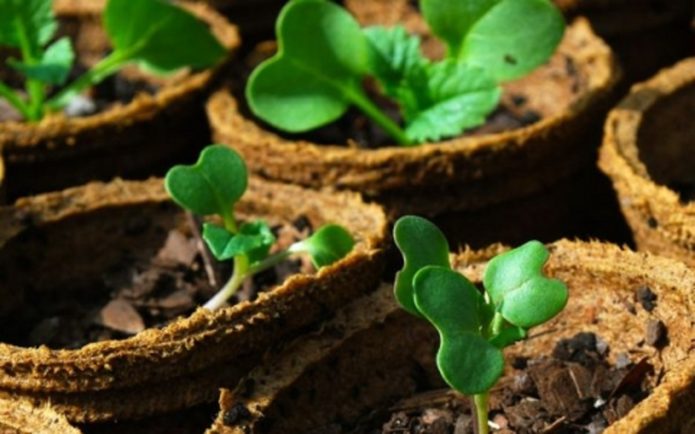
It is very convenient to dive cabbage into peat pots - it is transplanted to the garden along with the container
Video: picking cabbage seedlings into diapers and cups
Caring for cabbage after picking
To make the seedlings easier to transfer and take root faster, it is necessary to create comfortable conditions for them.
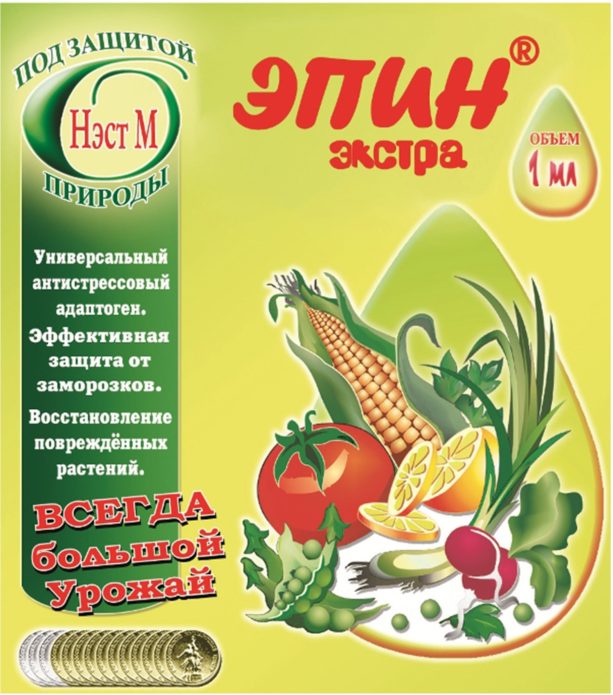
The use of Epin Extra promotes the rapid recovery of plants damaged during transplantation and their accelerated growth
Temperature and light conditions
The first 2-3 days after the pick, the temperature in the room should be increased to + 18–20 ° С, then the temperature regime that is optimal for cabbage seedlings should be maintained: + 14–16 ° С during the day, + 10–12 ° С at night - then it will grow strong and hardy.
Plants need to be provided with good lighting, but protected from direct sunlight. If there is a lack of light, in order to avoid stretching the seedlings, it is necessary to use additional illumination with fluorescent lamps.
Watering
Moisture-loving cabbage should be watered regularly, not allowing the soil to dry out. The water should be separated, at room temperature. However, moisture stagnation in the soil should be avoided, which can lead to black stalk and root rot. In indoor conditions with low air humidity, it is useful to spray plants.
Top dressing of seedlings
The first 7 days after picking the seedlings grow very slowly, then their growth becomes intense.The seedlings that have taken root need a balanced diet, therefore, a week after transplanting, they should be fed with nitrogen fertilizer - ammonium nitrate solution (5 g / 1 l) or mullein solution (1:10). Before transplanting into open ground, one more top dressing is carried out (5 g of Nitrofoski / 1 l or 20 g of Effekton / 1 l).
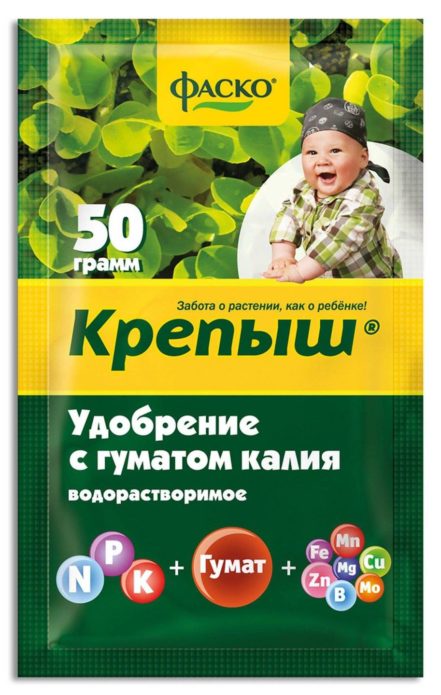
Complex fertilizer Krepysh, enriched with microelements, was specially developed for the successful cultivation of seedlings
Hardening cabbage
So that the seedlings planted in the garden do not dry out in the heat or freeze during a cold snap, it must be tempered. They begin to harden a week before transplanting to the site. First, the vents are opened briefly, then the containers with plants are placed on an unheated veranda or loggia, gradually increasing the time spent in the cold. Then, in the afternoon, the seedlings are left in the open air, bringing them indoors at night. Before planting, cabbage is taken out into the garden for a day. Seedlings after hardening become more viable, easily tolerating drought and bad weather.
Some novice gardeners are wary of picking cabbage, and in vain. Indeed, soon after germination, the seedlings, growing, begin to crowd in and take away light and nutrition from each other, which leads to their slowed down development. Transplanting them into a large container with renewed soil will help to grow strong and viable seedlings. However, it should be remembered that only a correct and timely picking will bring benefit.


